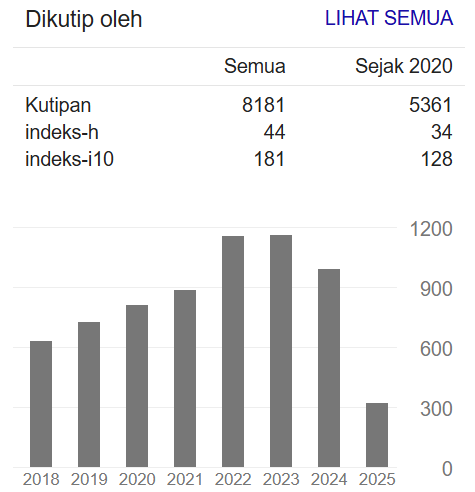ACTION RESEARCH: INFLUENCE NEURO-LINGUISTIC PROGRAMMING (NLP) ON RESILIENCE AND STRESS OF CENTRAL SURGERY INSTALLATION NURSES
DOI:
https://doi.org/10.34011/jmp2k.v35i1.2618Keywords:
neuro-linguistic programming (NLP), perawat, resiliensi, stresAbstract
Perawat yang bekerja di instalasi bedah sentral kerap mengalami beban kerja yang tinggi termasuk fisik dan emosional serta paparan radiasi berbahaya yang dapat menyebabkan stress kerja dan kejenuhan. Neuro-Linguistic Programming (NLP) adalah pendekatan yang berfokus pada mengubah pola pikir dan perilaku untuk meningkatkan kemampuan coping stress dengan memodifikasi respons individu ketika stress. Penelitian ini bertujuan untuk menganalisis pengaruh Neuro-Linguistic Programming (NLP) terhadap resiliensi dan stres perawat instalasi bedah sentral di Rumah Sakit Umum Diponegoro Dua Satu Klaten. Penelitian ini menggunakan metode kualitatif dengan jenis penelitian tindakan partisipan (action research). Penelitian ini melibatkan kolaborasi antara peneliti, instruktur NLP, dan 32 perawat yang dilaksanakan dalam dua siklus, dengan setiap siklus mencakup perencanaan, tindakan, observasi, dan refleksi. 6 perawat melalui kuesioner, wawancara, dan observasi, kemudian dianalisis untuk mengevaluasi efektivitas pelatihan NLP. Hasil penelitian ini bahwa NLP dapat meningkatkan resiliensi perawat dengan mengembangkan strategi coping yang efektif, keterampilan komunikasi, dan manajemen stress. Teknik reframing dan visualisasi positif membantu perawat melihat tantangan sebagai peluang, sementara teknik pacing dan leading meningkatkan hubungan dengan rekan kerja dan pasien. Implikasi dari penelitian ini menunjukkan bahwa penerapan NLP dapat meningkatkan kepuasan kerja dan kualitas pelayanan sekaligus menurunkan tingkat turn-over perawat. Dengan demikian, pelatihan NLP diharapkan menjadi investasi strategis untuk kesejahteraan mental perawat dan meningkatkan efisiensi layanan kesehatan di lingkungan yang penuh tekanan seperti Instalasi Bedah Pusat
References
F. A. Faremi, M. I. Olatubi, K. G. Adeniyi, and O. R. Salau, “Assessment of occupational related stress among nurses in two selected hospitals in a city southwestern Nigeria,” International Journal of Africa Nursing Sciences, vol. 10, no. 1, pp. 68–73, 2019, doi: https://doi.org/10.1016/j.ijans.2019.01.008.
E. Y. Lee, K. Kim, S. Ko, and E. K. Song, “Communication competence and resilience are modifiable factors for burnout of operating room nurses in South Korea,” BMC nursing, vol. 21, no. 1, p. 203, 2022, doi: https://doi.org/10.1186/s12912-022-00985-0.
N. Li, L. Zhang, X. Li, and Q. Lu, “The influence of operating room nurses’ job stress on burnout and organizational commitment: The moderating effect of over‐commitment,” Journal of Advanced Nursing, vol. 77, no. 4, pp. 1772–1782, 2021, doi: https://doi.org/10.1111/jan.14725.
S. S. Chesak, S. M. Cutshall, C. L. Bowe, K. M. Montanari, and A. Bhagra, “Stress management interventions for nurses: critical literature review,” Journal of holistic nursing, vol. 37, no. 3, pp. 288–295, 2019, doi: https://doi.org/10.1177/0898010119842693.
O. Ghazi Baker and B. Dhafer Alshehri, “The relationship between job stress and job satisfaction among Saudi nurses: A cross-sectional study,” vol. 10, no. 3, pp. 292–305, 2020, doi: https://doi.org/10.14710/NMJN.V10I3.32767.
F. Talebian, A. Hosseinnataj, and T. Yaghoubi, “The relationship between resilience and moral distress among Iranian critical care nurses: A cross-sectional correlational study,” Ethiopian Journal of Health Sciences, vol. 32, no. 2, pp. 405–412, 2022, doi: https://doi.org/10.4314/ejhs.v32i2.21.
Y. Guo, Y. Luo, L. Lam, W. Cross, V. Plummer, and J. Zhang, “Burnout and its association with resilience in nurses: A cross‐sectional study,” Journal of clinical nursing, vol. 27, no. 1–2, pp. 441–449, 2018, doi: https://doi.org/10.1111/jocn.13952.
Y. Asadi, Z. Molazem, Z. Mohebbi, and P. Ghaemmaghami, “Investigating the relationship between resilience and professional ethics in nurses: a cross-sectional study in southern Iran,” BMC nursing, vol. 22, no. 1, p. 409, 2023, doi: https://doi.org/10.1186/s12912-023-01578-1.
P. M. Shahrbabaki, P. Abolghaseminejad, L. A. Lari, S. Zeidabadinejad, and M. Dehghan, “The relationship between nurses’ psychological resilience and job satisfaction during the COVID-19 pandemic: a descriptive-analytical cross-sectional study in Iran,” BMC nursing, vol. 22, no. 1, p. 137, 2023, doi: https://doi.org/10.1186/s12912-023-01310-z.
M. Javadi, Y. Saeid, J. MokhtariNoori, and M. Sirati, “The effect of neuro linguistic programing strategies training on nurses’ emotional intelligence: A randomized clinical trial study,” J Appl Environ BiolSci, vol. 4, no. 7, pp. 238–244, 2014.
A. Kumar and S. P. Panda, “Performance analysis of neuro linguistic programming techniques using confusion matrix,” Indones. J. Electr. Eng. Comput. Sci, vol. 25, no. 3, pp. 1696–1702, 2022, doi: https://doi.org/10.11591/ijeecs.v25.i3.pp1696-1702.
M. HemmatiMaslakpak, M. Farhadi, and J. Fereidoni, “The effect of neuro-linguistic programming on occupational stress in critical care nurses,” Iranian journal of nursing and midwifery research, vol. 21, no. 1, pp. 38–44, 2016, doi: https://doi.org/10.4103/1735-9066.174754.
S. Li, S. Lu, S. Ni, and K. Peng, “Identifying psychological resilience in Chinese migrant youth through multidisciplinary language pattern decoding,” Children and Youth Services Review, vol. 107, no. 1, p. 104506, 2019, doi: https://doi.org/10.1016/j.childyouth.2019.104506.
M. V. Bui, E. McInnes, G. Ennis, and K. Foster, “Resilience and mental health nursing: An integrative review of updated evidence,” International Journal of Mental Health Nursing, vol. 32, no. 4, pp. 1055–1071, 2023, doi: https://doi.org/10.1111/inm.13132.
M. Waruwu, “Pendekatan penelitian pendidikan: metode penelitian kualitatif, metode penelitian kuantitatif dan metode penelitian kombinasi (Mixed Method),” Jurnal Pendidikan Tambusai, vol. 7, no. 1, pp. 2896–2910, 2023.
F. Syahdan, “Hubungan antara keterampilan kerja dengan produktivitas kerja,” Psikoborneo, vol. 5, no. 1, pp. 1–10, 2017.
K. L. Chrouser, J. Xu, S. Hallbeck, M. B. Weinger, and M. R. Partin, “The influence of stress responses on surgical performance and outcomes: literature review and the development of the surgical stress effects (SSE) framework,” The American Journal of Surgery, vol. 216, no. 3, pp. 573–584, 2018.
K. M. Connor and J. R. T. Davidson, “Development of a new resilience scale: The Connor‐Davidson resilience scale (CD‐RISC),” Depression and anxiety, vol. 18, no. 2, pp. 76–82, 2003, doi: https://doi.org/10.1002/da.10113.
M. R. Anjomshoa, M. R. Esmailzadeh, and M. Keshtidar, “Effects of neuro-linguistic programming course on job stress, positive organizational behavior and job motivation in physical education teachers,” Pedagogy of physical culture and sports, vol. 24, no. 3, pp. 111–117, 2020.
S. E. French, R. Lenton, V. Walters, and J. Eyles, “An empirical evaluation of an expanded nursing stress scale,” Journal of nursing measurement, vol. 8, no. 2, pp. 161–178, 2000, doi: https://doi.org/10.1891/1061-3749.8.2.161.
P. Sarafis et al., “The impact of occupational stress on nurses’ caring behaviors and their health related quality of life,” BMC nursing, vol. 15, no. 1, pp. 1–9, 2016, doi: https://doi.org/10.1186/s12912-016-0178-y.




